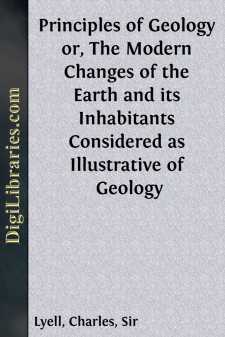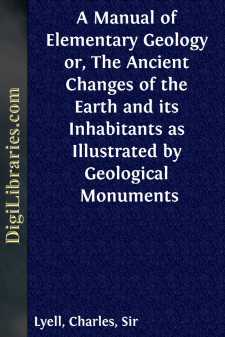Categories
- Antiques & Collectibles 13
- Architecture 36
- Art 48
- Bibles 22
- Biography & Autobiography 813
- Body, Mind & Spirit 142
- Business & Economics 28
- Children's Books 16
- Children's Fiction 13
- Computers 4
- Cooking 94
- Crafts & Hobbies 4
- Drama 346
- Education 46
- Family & Relationships 57
- Fiction 11829
- Games 19
- Gardening 17
- Health & Fitness 34
- History 1377
- House & Home 1
- Humor 147
- Juvenile Fiction 1873
- Juvenile Nonfiction 202
- Language Arts & Disciplines 88
- Law 16
- Literary Collections 686
- Literary Criticism 179
- Mathematics 13
- Medical 41
- Music 40
- Nature 179
- Non-Classifiable 1768
- Performing Arts 7
- Periodicals 1453
- Philosophy 64
- Photography 2
- Poetry 896
- Political Science 203
- Psychology 42
- Reference 154
- Religion 513
- Science 126
- Self-Help 84
- Social Science 81
- Sports & Recreation 34
- Study Aids 3
- Technology & Engineering 59
- Transportation 23
- Travel 463
- True Crime 29
Charles Lyell
Charles Lyell (1797–1875) was a Scottish geologist and author, best known for his influential work in the field of geology. His most famous book, "Principles of Geology," published in three volumes between 1830 and 1833, introduced the theory of uniformitarianism, which suggested that the Earth's features were shaped by slow, gradual processes over vast periods of time. This challenged the prevailing view that Earth's geological features were formed by sudden, catastrophic events. Lyell's ideas greatly influenced Charles Darwin and helped shape modern geology.
Author's Books:
Sort by:
by:
Charles Lyell
CHAPTER I. Geology defined—Compared to History—Its relation to other Physical Sciences—Not to be confounded with Cosmogony. Geology is the science which investigates the successive changes that have taken place in the organic and inorganic kingdoms of nature; it inquires into the causes of these changes, and the influence which they have exerted in modifying the surface and external structure of...
more...
by:
Charles Lyell
Tracks of a Lower Silurian reptile in Canada.âIn the year 1847, Mr. Robert Abraham announced in the Montreal Gazette, of which he was editor, that the track of a freshwater tortoise had been observed on the surface of a stratum of sandstone in a quarry opened on the banks of the St. Lawrence at Beauharnais in Upper Canada. The inhabitants of the parish being perfectly familiar with the track of...
more...



